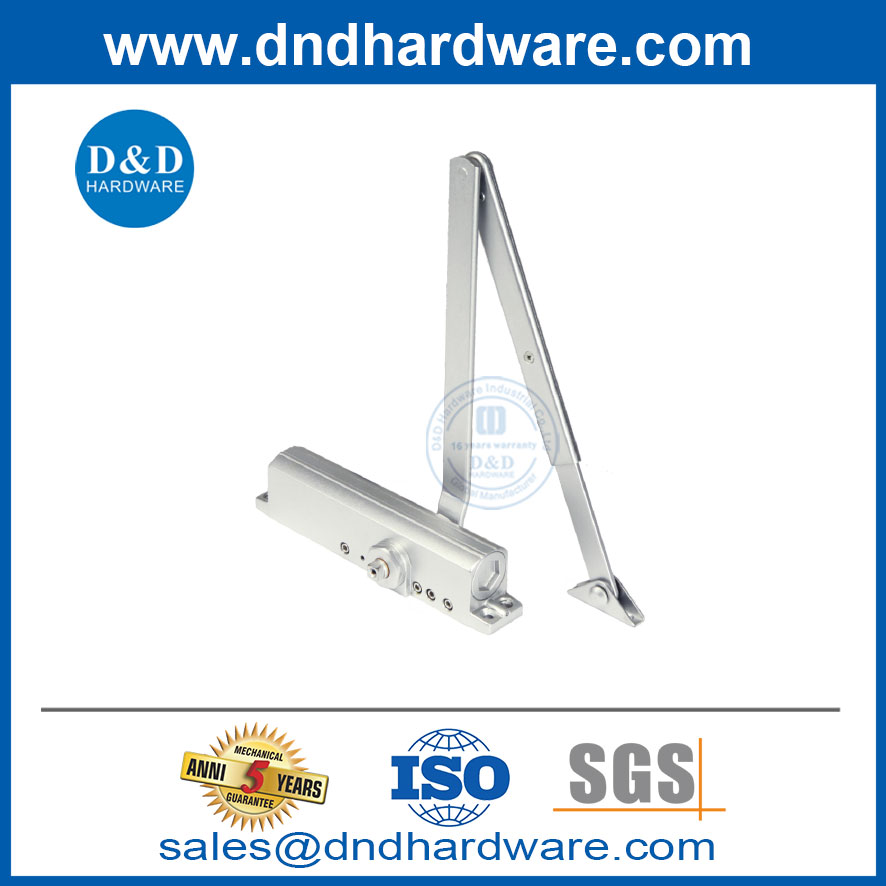Views: 0 Author: Site Editor Publish Time: 2024-06-20 Origin: Site

Door closers are essential devices installed on doors to ensure they close automatically after being opened. They play a crucial role in maintaining security, energy efficiency, and fire safety within buildings. By controlling the door's closing speed, door closers prevent slamming, reduce wear and tear, and enhance user convenience.
Proper adjustment of a door closer is vital for its optimal performance. Incorrect settings can lead to issues such as doors not closing fully or closing too quickly, which can pose safety hazards or cause damage over time. Among the various adjustments available on a door closer, the "L" (Latch) and "S" (Sweep) adjustments are particularly important for fine-tuning its operation.
The "L" adjustment stands for latch speed control, while the "S" adjustment refers to sweep speed control. Both settings are integral in ensuring that a door closes smoothly and securely.
The latch speed adjustment controls the final few inches of the door's closing motion before it latches shut. This setting is crucial because it ensures that the door closes firmly enough to engage any locking mechanisms without slamming shut too forcefully.
A properly adjusted latch speed will allow the door to close gently but securely into its frame, preventing damage to both the door and frame while ensuring that any locks engage correctly.
The sweep speed adjustment governs how quickly or slowly the main portion of the door's closing motion occurs—from when it starts closing until just before it reaches those final few inches controlled by the latch speed setting.
Adjusting this setting allows you to control how fast or slow your door swings closed after being opened. A well-adjusted sweep speed ensures that doors do not close too rapidly—potentially causing injury—or too slowly—leading to inefficiency in maintaining climate control or security measures.
Adjusting your door closer’s Latch (L) and Sweep (S) speeds can be done with relative ease if you follow these steps:
Locate Adjustment Screws: Most modern hydraulic or pneumatic door closers have clearly marked screws labeled “L” for latch.
Turn Screw Clockwise/Counterclockwise: Use a screwdriver to turn this screw clockwise if you need slower latching action; turn counterclockwise if faster latching is required.
Test Door Operation: Open then release your door several times after each minor adjustment until desired latching behavior is achieved.
Fine-Tune as Needed: Make small incremental changes rather than large turns so as not overshoot ideal settings.
Identify Sweep Control Screw: Similar process applies here where another screw marked “S” should be present near hinge side.
Adjust Accordingly: Turning this screw clockwise will slow down sweeping action whereas counterclockwise increases closure rate.
Observe Changes Carefully: After each tweak open-and-close cycle should reveal whether further modification necessary.
4.Ensure Balance Between Both Controls: It’s important balance between two controls maintained otherwise one might negate effect other leading suboptimal performance overall system itself!
If despite adjustments made still experiencing problems like incomplete closure check whether hinges themselves properly aligned lubricated!
Sometimes environmental factors such temperature humidity affect viscosity fluid inside hydraulic models hence periodic readjustment might become necessary especially during seasonal transitions!
Lastly always refer manufacturer’s manual specific instructions particular model since designs vary widely across brands types available market today!
In conclusion understanding making correct use both “L” & “S” adjustments critical achieving smooth efficient operation any given installation! Properly tuned device not only enhances user experience but also contributes longevity durability entire setup thereby proving invaluable investment long run!